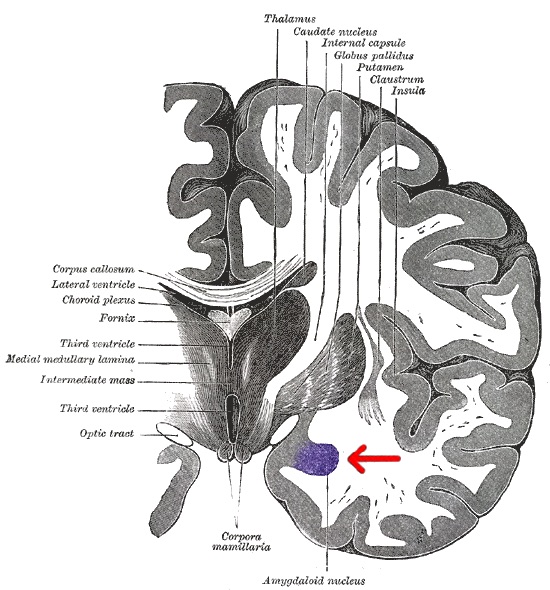“The wound is the place where the light enters you.” ~ Rumi
I recently came to the realization that I may be suffering from Post Traumatic Stress Disorder.
This epiphany took me by complete surprise. After all, I am a positive person by nature, an overcomer, a look-on-the-bright-sider.
If I am feeling down, I look at all that is good in my life. If I’m tired, I go to the gym. If I need to talk, I reach out to one of my many amazing friends.
But, in the last month, I have encountered some situations where my usual coping mechanisms could not control my body’s reaction to stress. I experienced several moments with certain people that brought back memories of negative, stressful events. In their presence I felt the onset and fruition of heart palpitations, shortness of breath, anxiety and sadness. I was shocked at my body’s reaction, and quite frankly disappointed in myself.
“We’re better than this,” I looked in the mirror and told myself. “This is not who we are. We’re the life of the party girl, the funny one. Not the panic attack, heart pounding, depressed girl.” But I couldn’t shake the physiological reactions my body was having to these stress “triggers.”
Despite my mind’s best efforts to tell me everything was okay, my body was winning in the war. I was so confused. Why, all of a sudden, was I experiencing this anxiety when seeing certain people in my life? I was fine when I didn’t see the stressors, but as soon as I saw them, those tough emotions set in. I wanted to crawl out of my skin, runaway to Zimbabwe, go back in time and join Elizabeth Gilbert in Italy on her Eat, Pray, Love journey, visit the space station with Lance Bass…anything to escape the uncomfortable emotions I was feeling.
I was walking down the hall toward my apartment as I thought about what the heck was going on with my nervous system. I fumbled to find my keys in my purse to open my door. “Mothereffer!” I said under my breath, as my fingers awkwardly meandered past my cell phone and around my mascara until they finally landed on my set of keys. I hoisted the keys out of my not-so-organized purse, finally managed to unlock my door, walked into my house, sat on my bed and contemplated.
I contemplated hard.
I lifted my feet up onto my mattress, laid my head back on my pillow, stared at the ceiling and thought some more. While staring at the blank, white space above me, my subconscious and conscious brain started to have a conversation…well, more like an argument. Here’s a brief snippet of their conversation:
Subconscious: I think you might have Post Traumatic Stress Disorder.
Conscious: No…absolutely not…there’s no way you could have PTSD. You’ve never been in war. You’ve never been physically abused. You’re being ridiculous! You have a better life than 97 percent of the world’s population…stop being such a baby!
I wanted to believe my conscious voice…I wanted to “get over it,” but I couldn’t. My subconscious was screaming—loud. I shut my eyes as I laid on my bed and tried to silence my cerebral conflict.
While I laid there with my eyes shut, memories started to flood into my consciousness—painful memories, memories I had done my absolute best to lock away in my subconscious for good. But on this day, for some reason, they wanted to be let loose. They took on a life of their own as they crawled from the back of my subconscious straight up to the forefront of my mind—front and center.
They played vividly before my squint-shut eyes.
I cringed and cried as I remembered the stressful events in my life I had tried so hard to forget: a tumultuous end to a marriage—brutal; trying to hold my baby girl still in the hospital while she screamed from the depths of her soul when the nurse awkwardly attempted to place an IV in her tiny little wrist to give her life saving antibiotics when she was hospitalized with pneumonia—agony; going to appointment after appointment trying to find out why she wasn’t talking, and watching the anesthesiologist put the gas mask over her face so they could sedate her while she went through an MRI and lumbar puncture—relentless pain.
The memories were too much for me to bear. Tears poured down my cheeks and I thought, “God, this is too much.” I don’t want to think about those sad memories anymore. I want to be “over it.” I want to be happy.
But I couldn’t get over it.
None of my go-to self-help strategies stood a chance against the strength of these visceral images flashing before my closed eyes. Like so many times before, I looked to God on Google and I discovered that there was a physiological, scientific reason why I could not get over it.
The Amygdala. It’s all about the amygdala.
The amygdala or amygdalae are “two almond-shaped groups of nuclei located deep and medially within the temporal lobes of the brain in complex vertebrates, including humans. Shown in research to perform a primary role in the processing of memory, decision-making, and emotional reactions, the amygdalae are considered part of the limbic system.”
The amygdala is a vital part of our brain for processing emotions and recognizing fear, but it is hard for the amygdala to release those negative emotions and memories, thus making it hard for us to purge those painful memories from our being. An article written in Psychology Today by Susan Barry reports:
“…the amygdala is involved with our experience of fear…one function of the amygdala may be to assign significance to experiences, particularly those that are frightening and life-threatening, and then to enhance the ability of other brain regions to consolidate memories of those event…the selective nature of our memory makes sense; our very survival may depend upon learning the lessons from life-threatening episodes. However, our ability to selectively remember traumatic episodes can also harm us. Seven percent of the general population suffer from Post-Traumatic Stress Disorder (PTSD). Episodes which produce intense fear can lead to PTSD with effects that may last for a month or persist for a lifetime Situations that remind the individual of the traumatic event or events can trigger excessive release of stress hormones and over-activation of the amygdala which further augments stress hormone release. The result is severe emotional distress, racing thoughts, anger, and hyper-vigilance.”
As I read the description of how stored memories in the amygdala can lead to PTSD, I knew this was exactly what I was experiencing. I called my counsellor to ask for some help.
She listened to my description of why I thought I may have PTSD and then lavished her wisdom on me. She encouraged me and conveyed that the fact that I was even able to see and feel the painful memories was a positive sign in itself. She said the conscious brain has a way of protecting us from our subconscious brain (amygdala) until we are ready to process these emotions. This is good you are feeling these emotions and memories. It means we are ready to heal.
Hope began to bloom in my soul. I responded to my wise counsellor, “Thank you for your wisdom…I’ll see you Monday at two.”
I had experienced many wounds, but I knew with this new amygdala awareness, the light was about to enter.
Author: Wendy Haley
Image: Pixabay
Editors: Emily Bartran; Waylon Lewis












Read 20 comments and reply